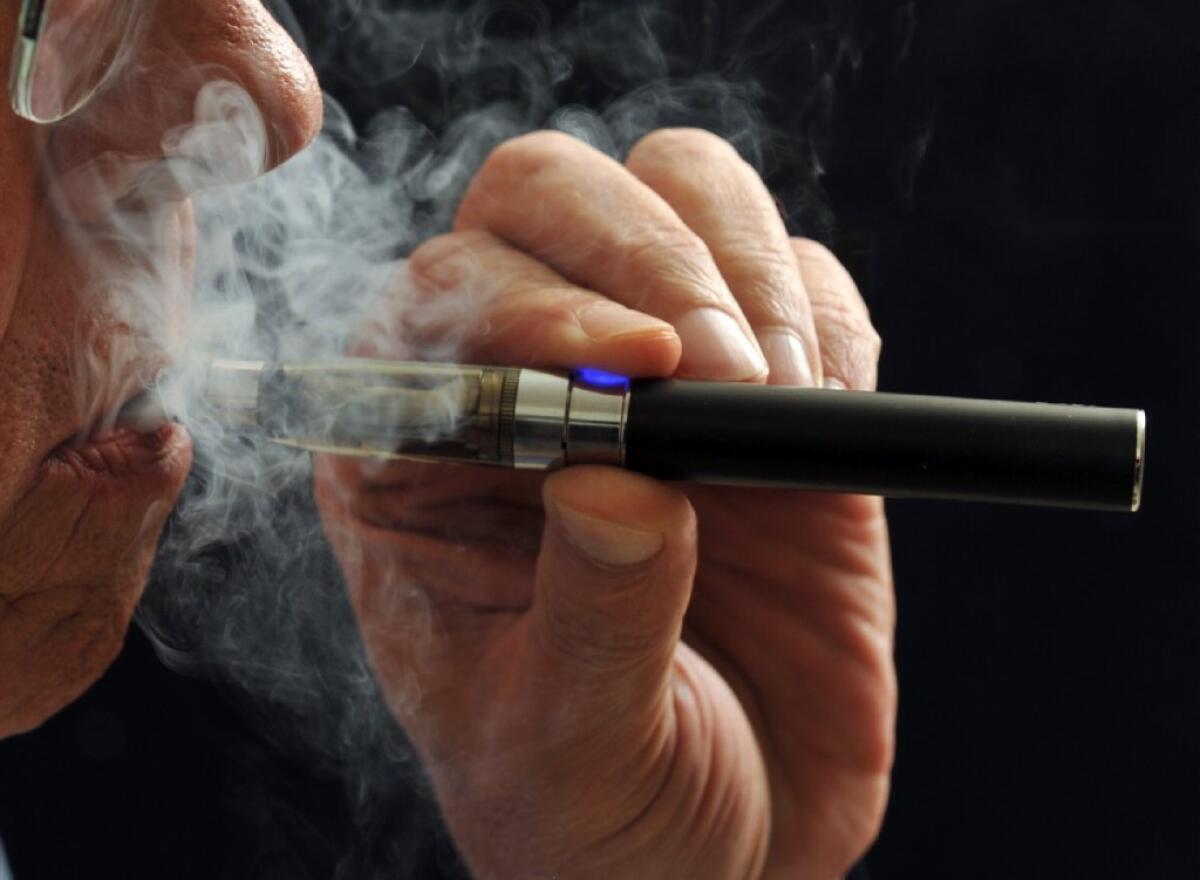New concern about e-cigarettes: They make smoking seem ‘normal’ again

- Share via
E-cigarettes, those battery-powered nicotine vapor delivery systems that are infiltrating the airwaves, schoolyards, and public spaces, are threatening to undo a decades-long campaign to stigmatize smoking.
That’s according to an article in the latest New England Journal of Medicine. Anti-smoking activists, the article reports, fear that e-cigs will lead to the “renormalization” of smoking. Their concern is that the rise of e-cigs will interfere with the tobacco “endgame” -- the global elimination of all tobacco use -- by returning the habit of smoking from the social margins to which it has been relegated.
Moreover, because the health effects of e-cigs haven’t yet been fully studied, the return of public puffing, even of a non-tobacco product, is dangerous.
E-cigs use a battery-powered heater to vaporize liquid synthetic nicotine, along with a substance that replicates the look and feel of cigarette smoke for the user to inhale and expel. Traditional tobacco companies such as Lorillard and Altria have jumped into the market with widely advertised brands such as blu and MarkTen.
Since most e-cigs are based on nicotine, a highly addictive substance, the anti-smoking community sees them as tools for tobacco companies to replace one habit-forming product on the decline with another one on the rise.
E-cigarettes, the NEJM article observes, “are challenging a barrier to television promotion erected more than 40 years ago.” Media figures such as Jenny McCarthy (whose baleful effect on public health through her anti-vaccination campaign we’ve touched on here) and Stephen Dorff are hawking e-cigs in ads, sometimes positioning them as tools to circumvent freedom-killing laws barring tobacco smoking in public places.
Flavored varieties, including bubble gum-like flavors, raises concerns that the tobacco industry is once again trying to hook children and adolescents on an addictive product. Indeed, the Centers for Disease Control reports that use is growing sharply among middle- and high-school students, albeit from a small base.
The battle over public e-smoking is just being joined. Last month the Los Angeles City Council placed e-cigs in the same product category as conventional cigarettes, banning their sale from street kiosks, ice cream trucks and self-service displays and requiring retailers to obtain a license before selling them. Bans or other restrictions are under consideration in other cities across the nation. Of all UC campuses, e-cigs are allowed only at UC Irvine. Pressure is on the Food and Drug Administration to regulate e-cigs as it does tobacco.
Not all smoking opponents think the goal of eradicating e-cigs is a good thing. According to the NEJM piece, some studies indicate that e-cigs are being used mostly as smoking cessation aids. Other activists say that the goal of totally eliminating anything resembling smoking will work against the more important, and more achievable, goal of reducing risk by discouraging smoking. They point to the history of alcohol and narcotics prohibition as a warning that total eradication is almost impossible and that efforts to accomplish it often backfire.
What’s more important, the NEJM article concludes, is for the FDA to get its arms around the phenomeon and subject it, without delay, to regulation.







